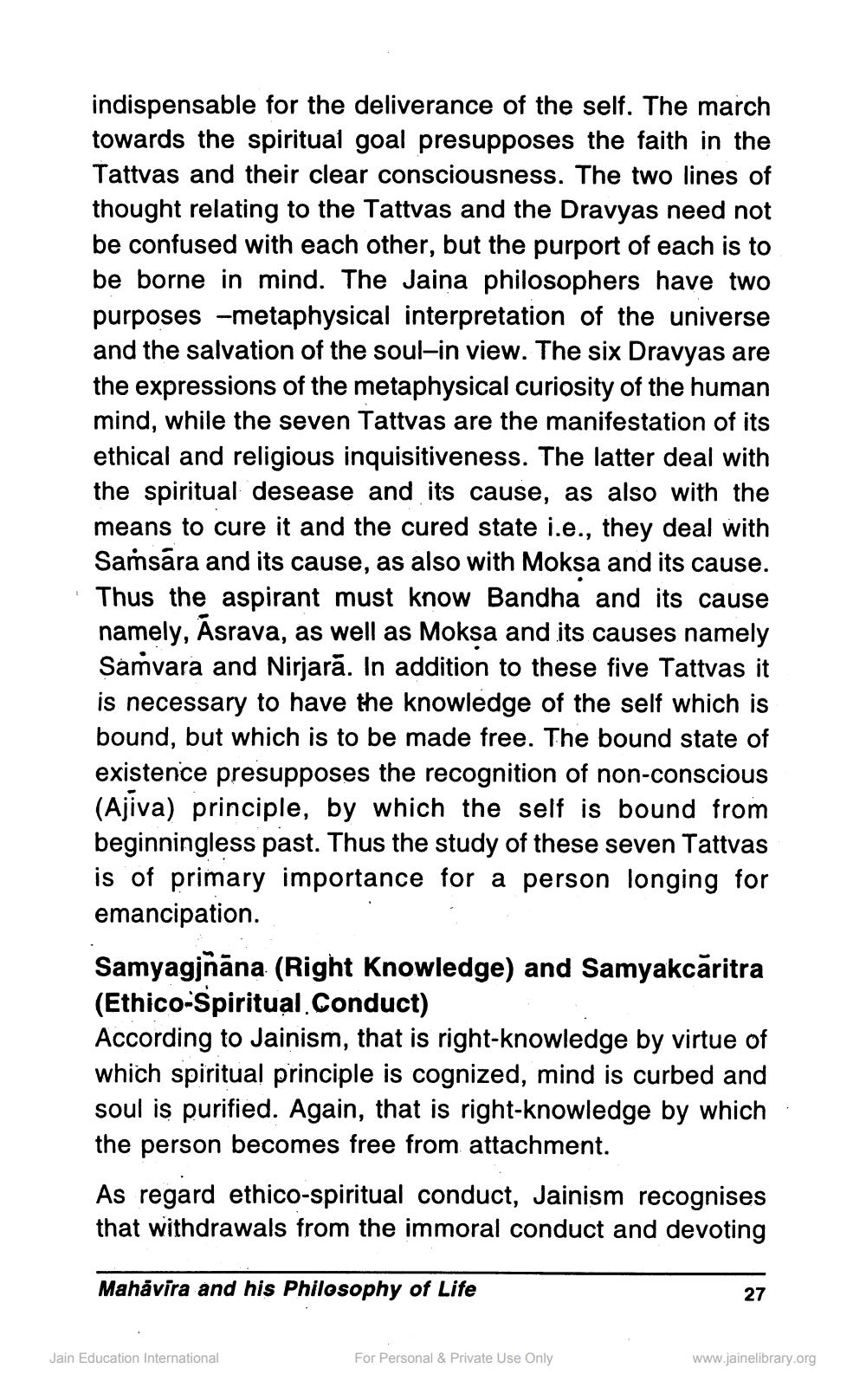________________
indispensable for the deliverance of the self. The march towards the spiritual goal presupposes the faith in the Tattvas and their clear consciousness. The two lines of thought relating to the Tattvas and the Dravyas need not be confused with each other, but the purport of each is to be borne in mind. The Jaina philosophers have two purposes -metaphysical interpretation of the universe and the salvation of the soul-in view. The six Dravyas are the expressions of the metaphysical curiosity of the human mind, while the seven Tattvas are the manifestation of its ethical and religious inquisitiveness. The latter deal with the spiritual desease and its cause, as also with the means to cure it and the cured state i.e., they deal with Samsara and its cause, as also with Moksa and its cause. Thus the aspirant must know Bandha and its cause namely, Asrava, as well as Moksa and its causes namely Samvara and Nirjară. In addition to these five Tattvas it is necessary to have the knowledge of the self which is bound, but which is to be made free. The bound state of existence presupposes the recognition of non-conscious (Ajiva) principle, by which the self is bound from beginningless past. Thus the study of these seven Tattvas is of primary importance for a person longing for emancipation.
Samyagjñāna (Right Knowledge) and Samyakcăritra (Ethico-Spiritual Conduct)
According to Jainism, that is right-knowledge by virtue of which spiritual principle is cognized, mind is curbed and soul is purified. Again, that is right-knowledge by which the person becomes free from attachment.
As regard ethico-spiritual conduct, Jainism recognises that withdrawals from the immoral conduct and devoting
Mahavira and his Philosophy of Life
Jain Education International
For Personal & Private Use Only
27
www.jainelibrary.org




